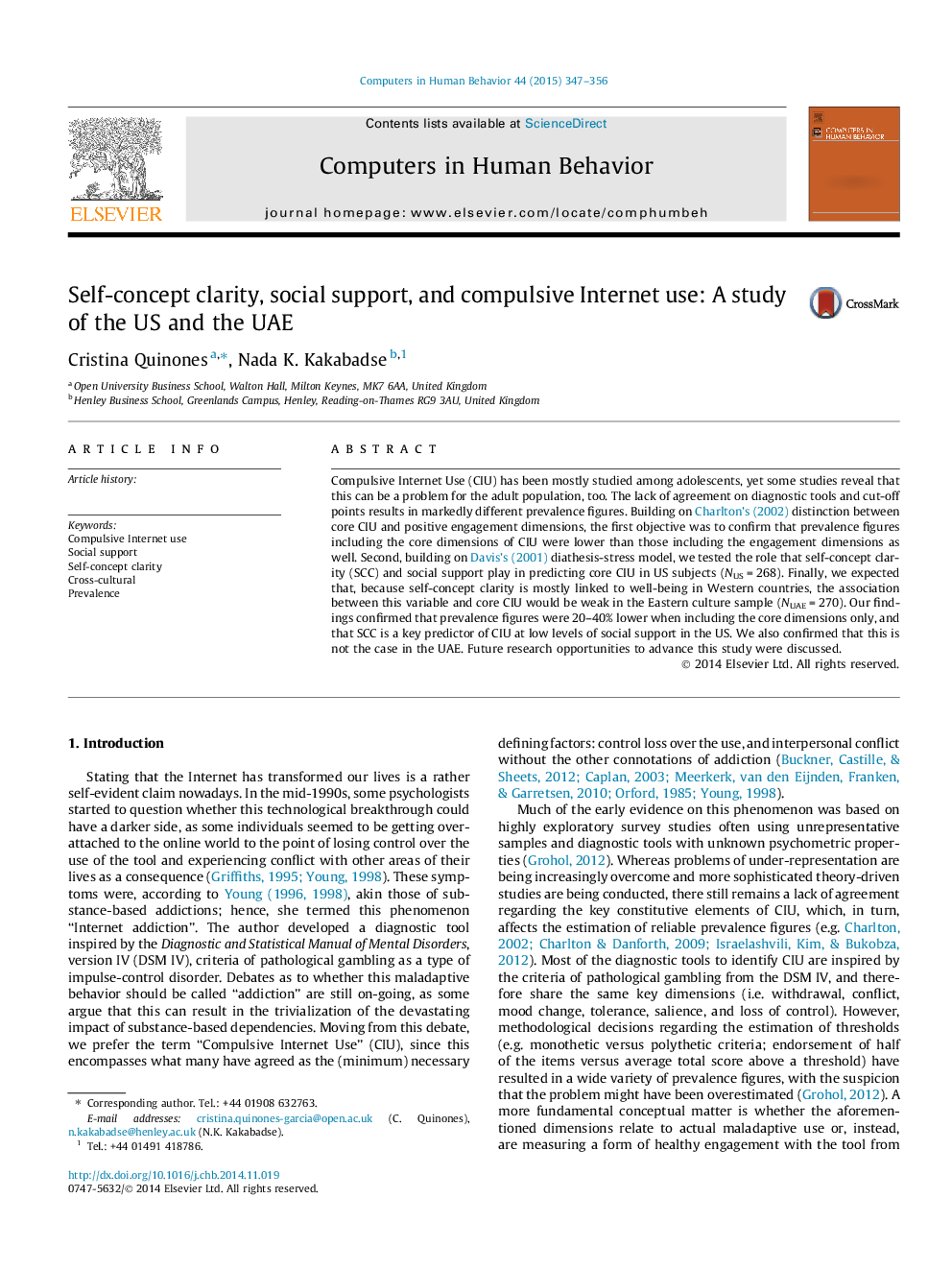| Article ID | Journal | Published Year | Pages | File Type |
|---|---|---|---|---|
| 6838652 | Computers in Human Behavior | 2015 | 10 Pages |
Abstract
Compulsive Internet Use (CIU) has been mostly studied among adolescents, yet some studies reveal that this can be a problem for the adult population, too. The lack of agreement on diagnostic tools and cut-off points results in markedly different prevalence figures. Building on Charlton's (2002) distinction between core CIU and positive engagement dimensions, the first objective was to confirm that prevalence figures including the core dimensions of CIU were lower than those including the engagement dimensions as well. Second, building on Davis's (2001) diathesis-stress model, we tested the role that self-concept clarity (SCC) and social support play in predicting core CIU in US subjects (NUSÂ =Â 268). Finally, we expected that, because self-concept clarity is mostly linked to well-being in Western countries, the association between this variable and core CIU would be weak in the Eastern culture sample (NUAEÂ =Â 270). Our findings confirmed that prevalence figures were 20-40% lower when including the core dimensions only, and that SCC is a key predictor of CIU at low levels of social support in the US. We also confirmed that this is not the case in the UAE. Future research opportunities to advance this study were discussed.
Related Topics
Physical Sciences and Engineering
Computer Science
Computer Science Applications
Authors
Cristina Quinones, Nada K. Kakabadse,
